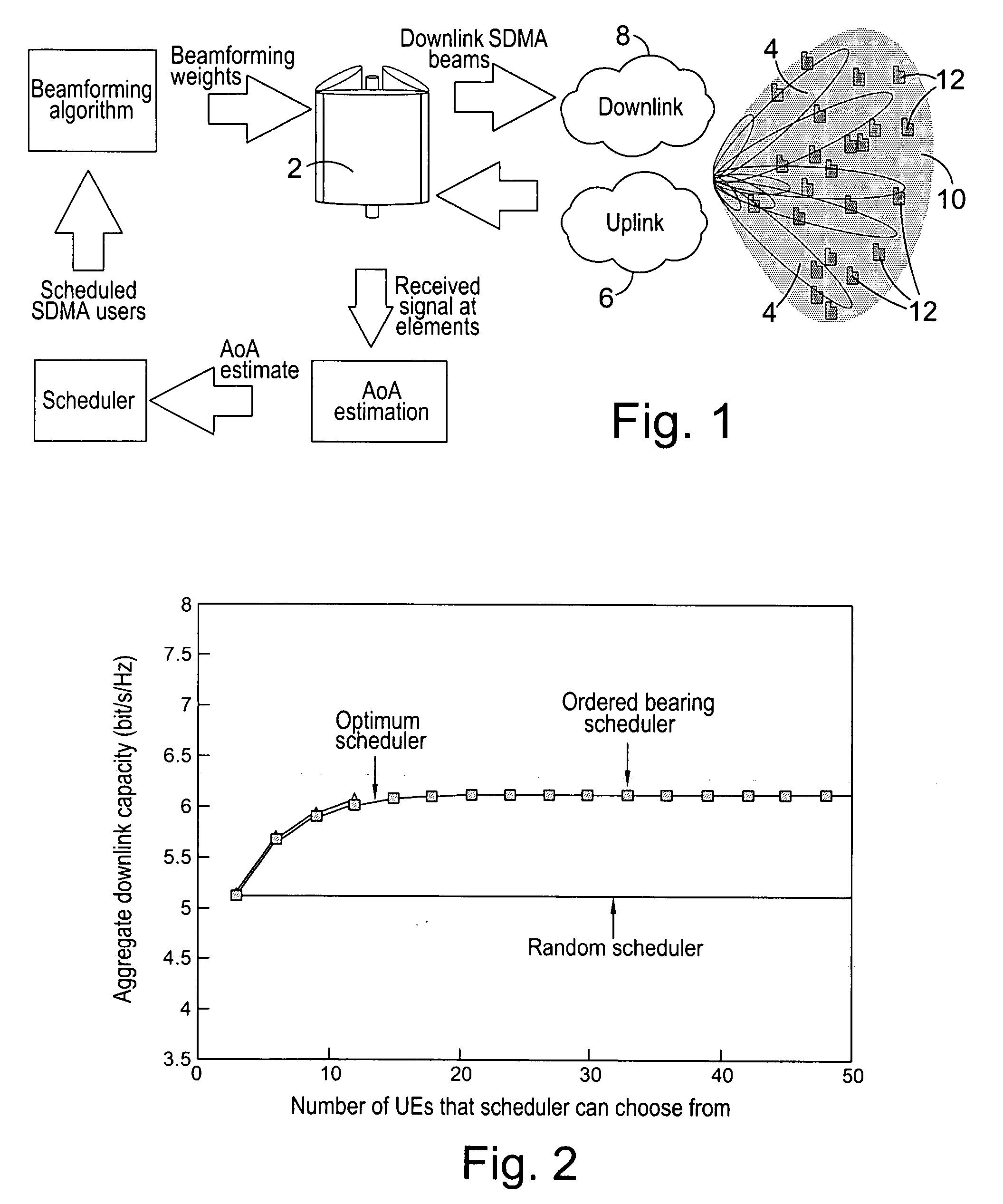Downlink beamforming for broadband wireless networks
a wireless network and beamforming technology, applied in adaptive control, wireless commuication services, instruments, etc., can solve the problems of particularly challenging downlink beamforming in fdd environment, achieve multi-spectral efficiency gains in wireless networks, enhance sdma system performance, and increase traffic throughput of sectors
- Summary
- Abstract
- Description
- Claims
- Application Information
AI Technical Summary
Benefits of technology
Problems solved by technology
Method used
Image
Examples
Embodiment Construction
[0029] An adaptive beam, SDMA system architecture, is described below followed by a high level description of hardware which may be used to implement the proposed system. The requirements such a system places upon antenna design is also discussed.
[0030] The results of a set of system simulations are then presented which illustrate the performance gain in different propagation environments ranging from benign to urban; the influence of the scheduler; the impact of realistic implementation errors; and a comparison with alternative fixed and adaptive beamforming schemes.
System Architecture
[0031]FIG. 1 shows a possible system architecture in block diagram form. The system is based upon a close-spaced, cross-polar linear array 2, which is used to radiate beams 4 on both the uplink 6 and downlink 8. The array 2 carries user-specific traffic on beams which track the desired UEs 12 movements whilst forming nulls towards interfering UEs. The same array 2 also carries broadcast and signal...
PUM
 Login to View More
Login to View More Abstract
Description
Claims
Application Information
 Login to View More
Login to View More - R&D
- Intellectual Property
- Life Sciences
- Materials
- Tech Scout
- Unparalleled Data Quality
- Higher Quality Content
- 60% Fewer Hallucinations
Browse by: Latest US Patents, China's latest patents, Technical Efficacy Thesaurus, Application Domain, Technology Topic, Popular Technical Reports.
© 2025 PatSnap. All rights reserved.Legal|Privacy policy|Modern Slavery Act Transparency Statement|Sitemap|About US| Contact US: help@patsnap.com



